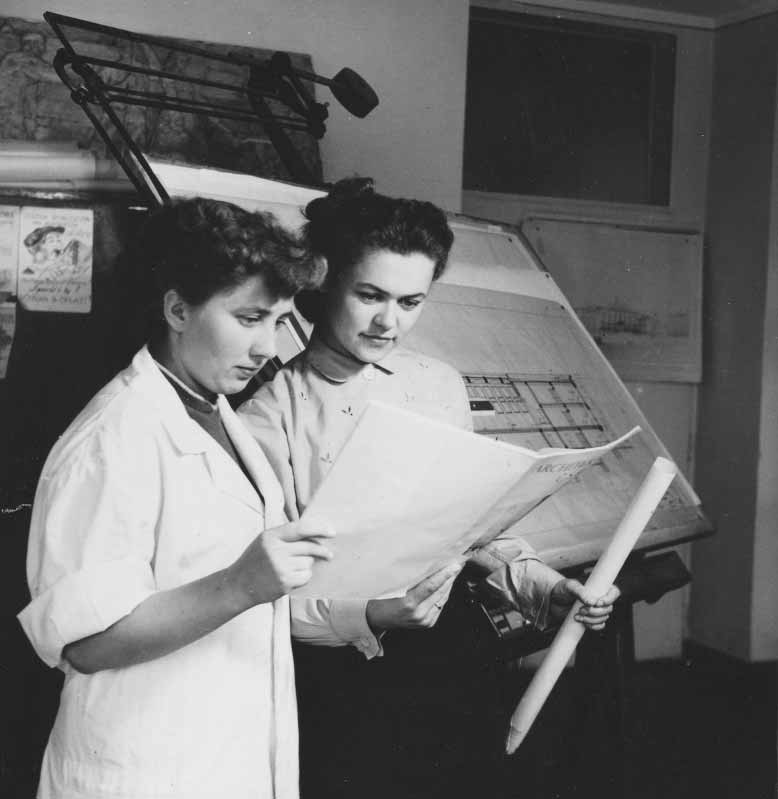The present study devotes attention to the activities of the women architects who were the first graduates of the Faculty of Architecture and Construction at the Slovak Technical University in Bratislava and started their careers in design work in the midpoint of the 20th century. Through several personalities selected on the basis of their authorial oeuvre and lifestories, it sketches an image of the social situation, work possibilities and creative legacy of the first women to practice architecture in Slovakia. The first university department of architecture opened in Slovakia in 1946. As a result, the first women architects to arrive on the Slovak scene made their appearance in 1950, the year of the first graduating class, which included four women. In the following decades, the number of women enrolled gradually increased, yet the proportion between male and female graduates was always unequal and varied sharply from year to year. The successful working career of women architects depended to a large extent on their support from male colleagues. For this very reason, the majority of women who did manage to make names for themselves in the profession were the wives or partners of architects. Moreover, the greater number of them over time retreated from the front lines of professional standing into obscurity. Only a few women were able, during the 1960s, to escape this convention, and even so there were wide differences as to what level of autonomy they could gain. The strategies of their self-presentation within professional life could be divided into two basic typologies, depending on their working environment, family background, and above all personal characteristics. The first and more numerous type is represented by the women who chose the architectural role of the less-visible part of authorial pairs or teams. Though often playing significant roles in their working teams, they nonetheless submitted to male authority and their joint work was mostly seen through the personality of the men involved. Through these personal strategies, they either deliberately or through circumstance fulfilled the idea that they would never “vehemently design and successfully realise great architecture”. To name only the best-known of such women, we should cite Katarína Chudomelková, as the working partner of her husband Karol Chudomelek, Gabriela Cimmermannová, who worked in the same team as her husband Anton Cimmermann, Eva Vítková, who worked with her husband Jaroslav Vítek, or Štefánia Krumlová, employed in the teams led by Ľudovít Jendreják or Imrich Ehrenberger. …

This work is licensed under a Creative Commons Attribution 4.0 International License.
